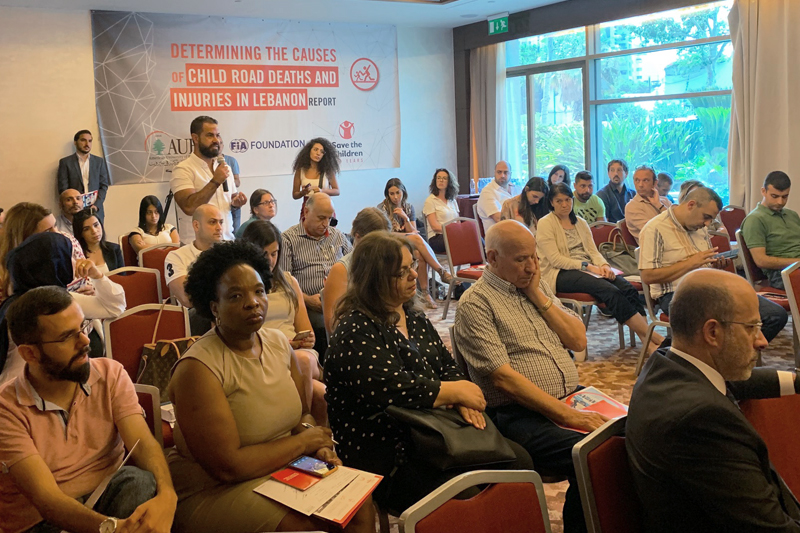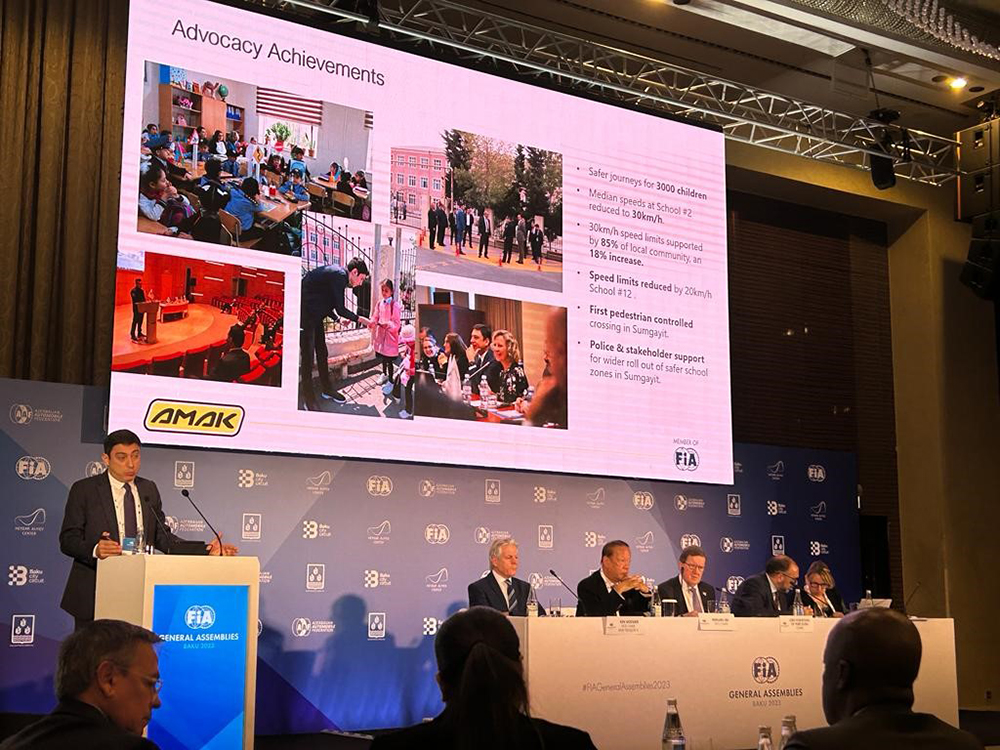New Save the Children report exposes risks facing children on the roads of Lebanon






A new, first of its kind report launched by Save the Children, FIA Foundation and the American University of Beirut, has revealed that child commuters and pedestrians face life-threatening risks on the roads of Lebanon. More than 1,000 children are killed or injured as road users every year in the country.
This study conducted a retrospective review of patient records and police reports of children injured between January 2015 and December 2017. Approximately 3,000 individual cases of children who sustained road injuries were reviewed with data from 30 private and public hospitals dispersed throughout Lebanon across six governorates including Beirut, Mount Lebanon, North Lebanon, South Lebanon and the Bekaa Valley.
The research found that vulnerable road users such as child pedestrians, cyclists and motorcyclists made up nearly half of the total road traffic injury cases at 47%. The majority of deaths (54%) took place on two-way roads that are not divided by a physical barrier and children aged 6 to 14 had the highest share of road traffic injuries at 45.2%.
Launched at a high-level event in Beirut, the report, Determining the Causes of Child Road Deaths and Injuries in Lebanon exposes the most common causes of child road traffic injury with the aim of highlighting the severity of this public health epidemic, its characteristics and associated risk factors. Analysing multiple sources of data from police reports and hospitals, means for the first time it is possible to comprehensively assess the burden of child road traffic injury and plot an effective course of action in the country.
According to the World Health Organization Global Status Report in 2018, the rate of road of deaths in Lebanon is estimated at 18.1 per 100,000, with more than half of fatalities below the age of 30. Despite the available data on road traffic injury in Lebanon, underreporting of deaths and injuries caused by road crashes is still a major concern that hinders the accurate assessment of the nation’s burden. However, limited available data points to the severity of the impact of road traffic injury as a major national health problem.
Road traffic injury prevention and control is a public health priority for WHO at the regional level, and a key part of the vision for the Eastern Mediterranean. In the Region, leadership solutions undertaken by countries include establishing an agency to spearhead road safety, developing road safety strategies and evaluating their impact, harmonizing and improving road traffic injury data, and raising awareness and public support.
Participants from Save the Children, FIA Foundation, the American University of Beirut, the National Road Safety Council and civil society discussed the findings of the new report and proven solutions to prevent road traffic injury. The dearth of accurate data was highlighted by doctor Ramzi Salame, the chair of National Road Safety Council, who estimates that underreporting is as high as 60% in Lebanon. With the establishment of the new National Road Safety Observatory, Salame hopes this will start to provide the accurate data so desperately needed.
Beirut, like much of Lebanon is heavily vehicle dependent, with many households often owning as many cars are there are family members. It is a heavily congested city, where public transport is nearly non- existent. Solutions such as reducing dependence on private cars and encouraging a modal shift with policies that promote safe non-motorised transport, could reduce the burden of road traffic injury as well as provide many cross-cutting benefits for health and the environment.
Children are much more prone to die or be seriously injure due to road traffic injury due to their size and are particularly vulnerable when using roads where there is a lack of protective infrastructure to separate them from traffic. Speaking at the high-level event in Beirut, FIA Foundation Programmes Manager Aggie Krasnolucka-Hickman, highlighted solutions offered by the safe systems approach to road safety:
“This approach has proven successful in many countries and we have seen how simple solutions such as infrastructure design and improvement, speed management, enforcement of traffic laws such as seat belt wear and child restraint systems contribute to addressing problems and significantly reducing injuries rates.”
Whilst there are laws on Child Restraint Systems in Lebanon, they are rarely enforced – another factor contributing to the high levels of child road traffic injury in the country.
Speaking at the launch of the new report, Allison Zelkowitz, Save the Children Lebanon’s Country Director, said, “This report underscores the gravity of a longstanding problem. Lebanon’s roads are not safe for adults, and now we know that they are equally dangerous for children. We now have the data to show this.
“Children are most vulnerable when they are walking on the streets, because without proper sidewalks or barriers, they can be hit by fast-moving cars. They are also more likely to be injured or even die when they are being transported in cars, particularly when they are not buckled safely into car seats or wearing seat belts.”
Download a full version of 'Determining the Causes of Child Road Deaths and Injuries in Lebanon' here.







